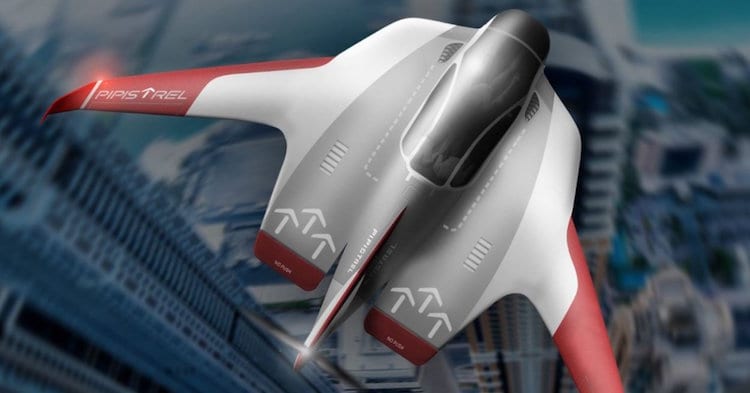
A computer rendering of the urban air mobility prototype aircraft being developed by Pipistrel. Photo: Honeywell.
Honeywell has begun developing new flight-control and detect-and-avoid systems for future urban air mobility vehicles, Mike Ingram, the company’s vice president of cockpit systems told Avionics International.
Ingram, who took over as vice president of Honeywell’s integrated cockpit systems division in June 2018, said the company’s new electric vertical takeoff and landing (eVTOL) avionics supplier partnership with Pipistrel is just the beginning. The company envisions providing cockpit systems that initially will be used by pilots and eventually enable autonomous operations.
Pipistrel’s partnership with Honeywell follows a series of similar agreements announced by avionics manufacturers in recent months, including Bell’s supplier contracts with Garmin and Thales for its Nexus eVTOL unveiled at the Consumer Electronics Show last month. According to Ingram, Honeywell wants to adapt existing integrated cockpit systems it supplies for fixed wing aircraft — such as Primus Epic and BendixKing — into brand new configurations for eVTOLs.
“The biggest difference is going to be the cost and a significant reduction in size, weight and power,” Ingram said.
Avionics development for eVTOL aircraft is still in its earliest stages for Honeywell, however Ingram said the design and architecture of the systems provided for these future aircraft will be driven by the different configurations that airframe makers are working on. Aircraft designs that have been unveiled so far are wide-ranging.
As an example, Bell’s Nexus uses six pivoting, ducted fans and a hybrid-electric propulsion system feeding power to the rotors and a battery. Boeing’s air taxi prototype, which completed its first test flight in January, uses eight canted lift rotors on booms with a pusher prop for forward cruise flight. German startup Volocopter, which will begin flight testing in Singapore this year, is fully electric with no combustion engine and can be flown autonomously or with a pilot using 18 rotors.
Upon revealing their partnership with Honeywell, Pipistrel unveiled a computer rendering of their prototype, but hasn’t released any design details other than a vertical takeoff air vehicle that can transition to fully autonomous operations in the future.
Ingram said the Pipistrel cockpit will follow its current display-centered setup on in-service commercial airplanes and business jets.
“I think you’ll still see a somewhat traditional display for the first round of vehicles, it will be difficult for people to take the big leap to go fully autonomous initially and have no pilot onboard,” Ingram said. “With the pilot we expect there will be traditional flight instrumentation, but quickly that will evolve to more of a flight attendant onboard, and then to eventually have no pilot onboard. The display purpose through those three different stages will be different.”
Another component of Honeywell’s partnership with Pipistrel will be to supply connectivity, which Ingram said will be an adaption of their existing JetWave satellite communications system. He said the company is also considering how to ensure the software deployed on Pipistrel’s first UAM vehicle is easily adaptable and upgradable in the future.
One of the ways Honeywell is also gathering information about how to design avionics for the future Pipistrel aircraft is through its participation in the General Aviation Manufacturers Association’s Simplified Vehicle Operations subcommittee, which includes representatives from NASA, the FAA and other aviation companies developing standards and a regulatory framework for future eVTOL vehicles.
“We feel obligated to be out in front of this and making sure the regulations are being defined by the traditional aviation companies,” Ingram said. “But also we have to adapt to the new entrants coming into this space that want to move fast toward service launch. That speed to launch has to be balanced so that we ensure we provide the safest means of transportation possible to the public.”